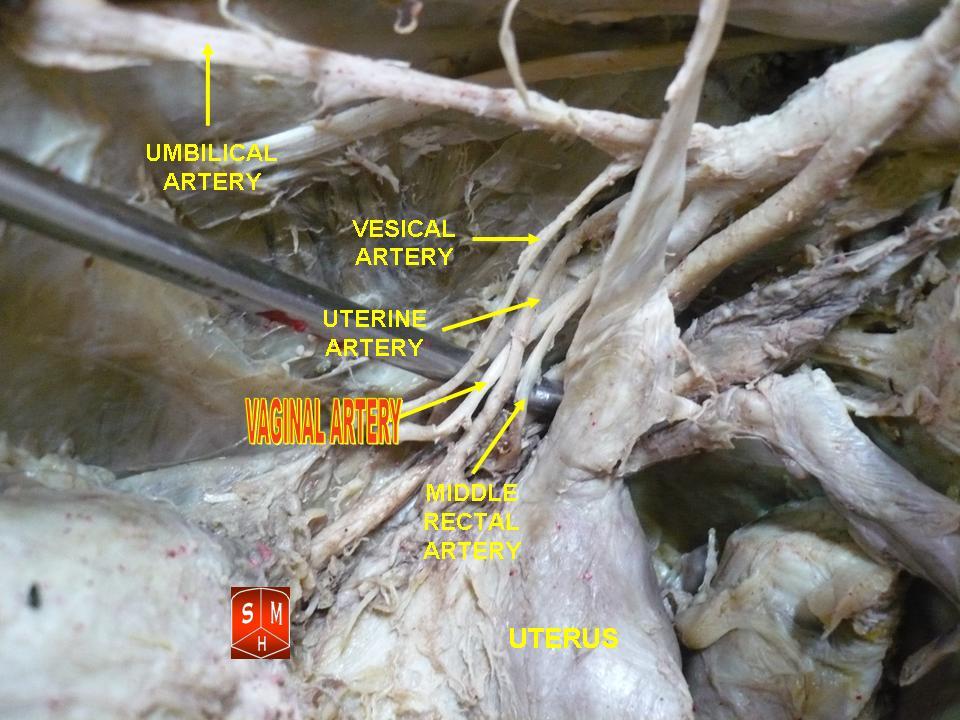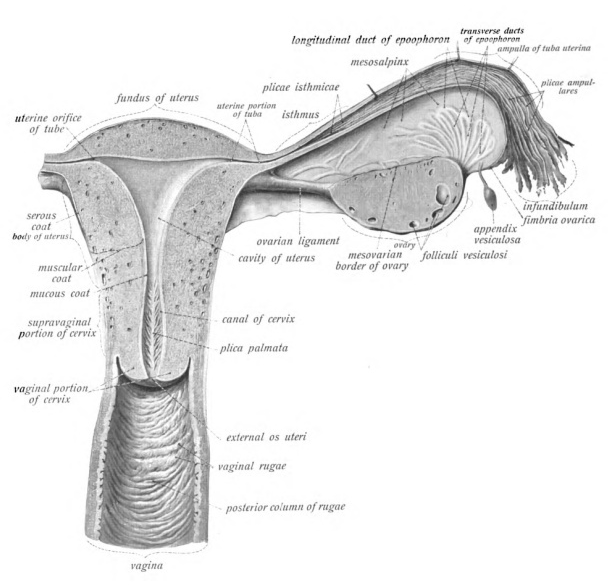|
Vaginal Venous Plexus
The vaginal venous plexus is a group of veins draining blood from the vagina. It lies around the sides of the vagina. Its blood is eventually into the internal iliac veins. Structure The vaginal venous plexus lies around the sides of the vagina. Its branches communicate with the uterine venous plexuses, vesical venous plexus, and rectal venous plexuses. It is drained by the ''vaginal veins'', one on either side. These eventually drain into the internal iliac veins (hypogastric veins). Function The vaginal venous plexus drains blood from the vagina In mammals, the vagina is the elastic, muscular part of the female genital tract. In humans, it extends from the vestibule to the cervix. The outer vaginal opening is normally partly covered by a thin layer of mucosal tissue called the hymen .... It helps to make the vagina highly vascular. References {{circulatory-stub Veins of the torso ... [...More Info...] [...Related Items...] OR: [Wikipedia] [Google] [Baidu] |
Vagina
In mammals, the vagina is the elastic, muscular part of the female genital tract. In humans, it extends from the vestibule to the cervix. The outer vaginal opening is normally partly covered by a thin layer of mucosal tissue called the hymen. At the deep end, the cervix (neck of the uterus) bulges into the vagina. The vagina allows for sexual intercourse and birth. It also channels menstrual flow, which occurs in humans and closely related primates as part of the menstrual cycle. Although research on the vagina is especially lacking for different animals, its location, structure and size are documented as varying among species. Female mammals usually have two external openings in the vulva; these are the urethral opening for the urinary tract and the vaginal opening for the genital tract. This is different from male mammals, who usually have a single urethral opening for both urination and reproduction. The vaginal opening is much larger than the nearby urethral opening, an ... [...More Info...] [...Related Items...] OR: [Wikipedia] [Google] [Baidu] |
Vaginal Artery
The vaginal artery is an artery in females that supplies blood to the vagina and the base of the bladder. Structure The vaginal artery is usually a branch of the internal iliac artery. Some sources say that the vaginal artery can arise from the uterine artery, but the phrase vaginal branches of uterine artery is the term for blood supply to the vagina coming from the uterine artery. The vaginal artery is frequently represented by two or three branches. These descend to the vagina, supplying its mucous membrane. They anastomose with branches from the uterine artery. It can send branches to the bulb of the vestibule, the fundus of the bladder, and the contiguous part of the rectum. Function The vaginal artery supplies oxygenated blood to the muscular wall of the vagina, along with the uterine artery The uterine artery is an artery that supplies blood to the uterus in females. Structure The uterine artery usually arises from the anterior division of the internal iliac artery. ... [...More Info...] [...Related Items...] OR: [Wikipedia] [Google] [Baidu] |
Female Reproductive System
The female reproductive system is made up of the internal and external sex organs that function in the reproduction of new offspring. In humans, the female reproductive system is immature at birth and develops to maturity at puberty to be able to produce gametes, and to carry a fetus to full term. The internal sex organs are the vagina, uterus, fallopian tubes, and ovaries. The female reproductive tract includes the vagina, uterus, and fallopian tubes and is prone to infections. The vagina allows for sexual intercourse and childbirth, and is connected to the uterus at the cervix. The uterus or womb accommodates the embryo which develops into the fetus. The uterus also produces secretions which help the transit of sperm to the fallopian tubes, where sperm fertilize ova (egg cells) produced by the ovaries. The external sex organs are also known as the ''genitals'' and these are the organs of the vulva including the labia, clitoris, and vaginal opening. During the menstrual cycle ... [...More Info...] [...Related Items...] OR: [Wikipedia] [Google] [Baidu] |
Blood
Blood is a body fluid in the circulatory system of humans and other vertebrates that delivers necessary substances such as nutrients and oxygen to the cells, and transports metabolic waste products away from those same cells. Blood in the circulatory system is also known as ''peripheral blood'', and the blood cells it carries, ''peripheral blood cells''. Blood is composed of blood cells suspended in blood plasma. Plasma, which constitutes 55% of blood fluid, is mostly water (92% by volume), and contains proteins, glucose, mineral ions, hormones, carbon dioxide (plasma being the main medium for excretory product transportation), and blood cells themselves. Albumin is the main protein in plasma, and it functions to regulate the colloidal osmotic pressure of blood. The blood cells are mainly red blood cells (also called RBCs or erythrocytes), white blood cells (also called WBCs or leukocytes) and platelets (also called thrombocytes). The most abundant cells in vertebrate blo ... [...More Info...] [...Related Items...] OR: [Wikipedia] [Google] [Baidu] |
Vagina
In mammals, the vagina is the elastic, muscular part of the female genital tract. In humans, it extends from the vestibule to the cervix. The outer vaginal opening is normally partly covered by a thin layer of mucosal tissue called the hymen. At the deep end, the cervix (neck of the uterus) bulges into the vagina. The vagina allows for sexual intercourse and birth. It also channels menstrual flow, which occurs in humans and closely related primates as part of the menstrual cycle. Although research on the vagina is especially lacking for different animals, its location, structure and size are documented as varying among species. Female mammals usually have two external openings in the vulva; these are the urethral opening for the urinary tract and the vaginal opening for the genital tract. This is different from male mammals, who usually have a single urethral opening for both urination and reproduction. The vaginal opening is much larger than the nearby urethral opening, an ... [...More Info...] [...Related Items...] OR: [Wikipedia] [Google] [Baidu] |
Elsevier
Elsevier () is a Dutch academic publishing company specializing in scientific, technical, and medical content. Its products include journals such as ''The Lancet'', ''Cell'', the ScienceDirect collection of electronic journals, '' Trends'', the '' Current Opinion'' series, the online citation database Scopus, the SciVal tool for measuring research performance, the ClinicalKey search engine for clinicians, and the ClinicalPath evidence-based cancer care service. Elsevier's products and services also include digital tools for data management, instruction, research analytics and assessment. Elsevier is part of the RELX Group (known until 2015 as Reed Elsevier), a publicly traded company. According to RELX reports, in 2021 Elsevier published more than 600,000 articles annually in over 2,700 journals; as of 2018 its archives contained over 17 million documents and 40,000 e-books, with over one billion annual downloads. Researchers have criticized Elsevier for its high profit marg ... [...More Info...] [...Related Items...] OR: [Wikipedia] [Google] [Baidu] |
Uterine Venous Plexus
The uterine plexuses lie along the sides and superior angles of the uterus between the two layers of the broad ligament, and communicate with the ovarian The ovary is an organ in the female reproductive system that produces an ovum. When released, this travels down the fallopian tube into the uterus, where it may become fertilized by a sperm. There is an ovary () found on each side of the body. T ... and vaginal plexuses. They are drained by a pair of uterine veins on either side: these arise from the lower part of the plexuses, opposite the external orifice of the uterus, and open into the corresponding hypogastric vein. Vasopressors, vasoconstrictor medications may be prescribed to alleviate the associated discomfort by shrinking the affected vein. References Veins of the torso Uterus {{circulatory-stub ... [...More Info...] [...Related Items...] OR: [Wikipedia] [Google] [Baidu] |
Vesical Venous Plexus
The vesical plexus envelops the lower part of the bladder and the base of the prostate and communicates with the pudendal and prostatic plexuses. It is drained, by means of several vesical veins The vesical veins are veins in the pelvis that drain blood from the urinary bladder. The vesical veins receive blood from the vesical venous plexus The vesical plexus envelops the lower part of the bladder and the base of the prostate The ..., into the internal iliac veins. References External links Anatomy at umich.edu Veins of the torso {{circulatory-stub ... [...More Info...] [...Related Items...] OR: [Wikipedia] [Google] [Baidu] |
Rectal Venous Plexus
The rectal venous plexus (or hemorrhoidal plexus) surrounds the rectum, and communicates in front with the vesical venous plexus in the male, and the vaginal venous plexus in the female. A free communication between the portal and systemic venous systems is established through the rectal venous plexus. This allows administration of some medications normally given by mouth to be given rectally, while still bypassing first pass metabolism. Examples include rectal Diazepam and orally dissolving medications. Parts It consists of two parts, an internal in the submucosa, and an external outside the muscular coat. Internal plexus The internal plexus presents a series of dilated pouches which are arranged in a circle around the tube, immediately above the anal orifice, and are connected by transverse branches. This internal plexus is also known in some medical communities as the Irving plexus. External plexus * The upper part of the external plexus is drained by the superior rectal vein ... [...More Info...] [...Related Items...] OR: [Wikipedia] [Google] [Baidu] |
Academic Press
Academic Press (AP) is an academic book publisher founded in 1941. It was acquired by Harcourt, Brace & World in 1969. Reed Elsevier bought Harcourt in 2000, and Academic Press is now an imprint of Elsevier. Academic Press publishes reference books, serials and online products in the subject areas of: * Communications engineering * Economics * Environmental science * Finance * Food science and nutrition * Geophysics * Life sciences * Mathematics and statistics * Neuroscience * Physical sciences * Psychology Well-known products include the ''Methods in Enzymology'' series and encyclopedias such as ''The International Encyclopedia of Public Health'' and the ''Encyclopedia of Neuroscience''. See also * Akademische Verlagsgesellschaft (AVG) — the German predecessor, founded in 1906 by Leo Jolowicz (1868–1940), the father of Walter Jolowicz Walter may refer to: People * Walter (name), both a surname and a given name * Little Walter, American blues harmonica player Marion Wa ... [...More Info...] [...Related Items...] OR: [Wikipedia] [Google] [Baidu] |




